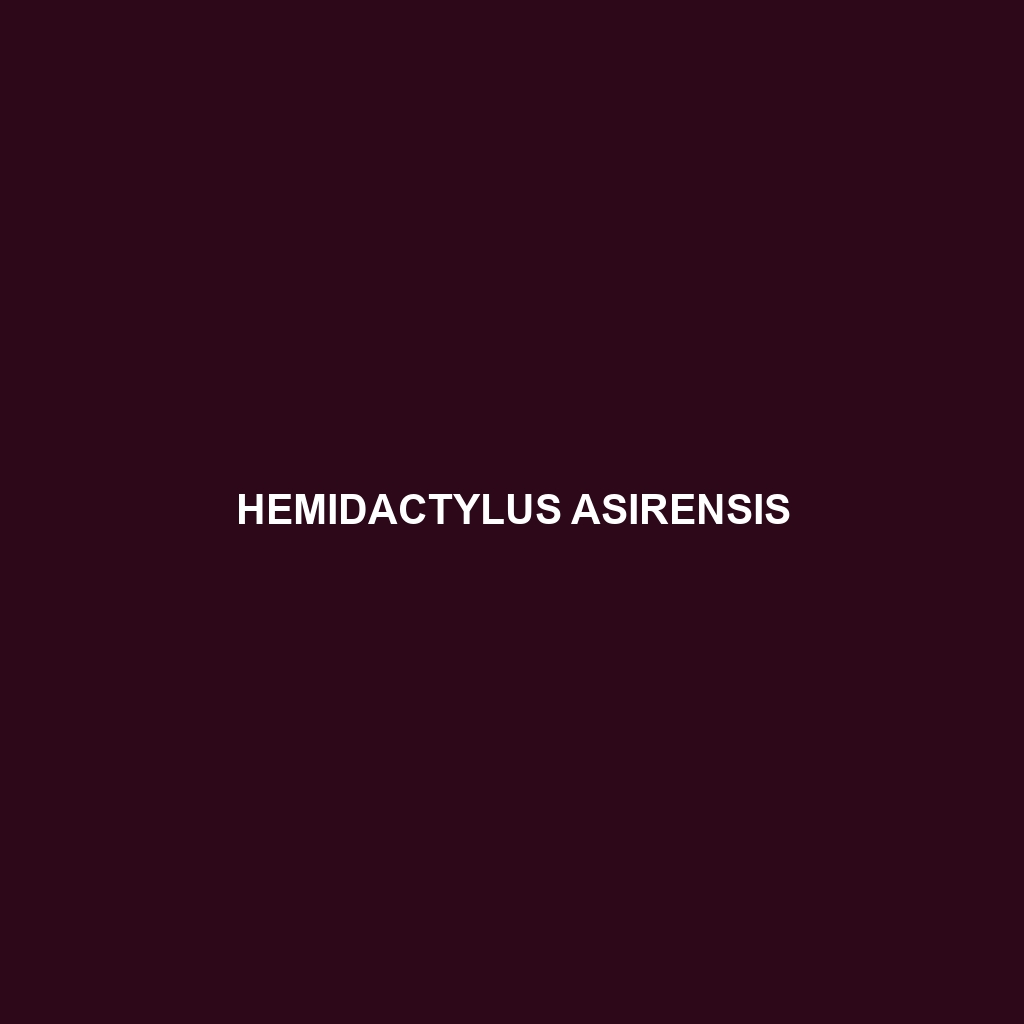Common Name
Hemidactylus asirensis
Scientific Name
Hemidactylus asirensis
Habitat
Hemidactylus asirensis, commonly known as the Asir gecko, primarily inhabits the mountainous regions of southwestern Saudi Arabia, particularly within the Asir Mountains. This species is predominantly found at elevations ranging from 1,000 to 2,500 meters. The climate in these areas is classified as a temperate climate with cool, wet winters and dry, hot summers. The diverse habitats include rocky outcrops, shrublands, and occasional forested areas, making them an integral part of the region’s unique biodiversity. This gecko can also be spotted in human-altered environments, where it seeks shelter in structures, enhancing its adaptability to different ecological niches.
Physical Characteristics
Hemidactylus asirensis exhibits distinctive physical traits that set it apart from other species within the family Gekkonidae. Adult geckos typically measure between 8 to 12 centimeters in length. Their bodies are slender, with a slightly flattened head and large, expressive eyes that aid in nocturnal activities. The coloration of Hemidactylus asirensis typically features a light brown or gray background, interspersed with darker mottled patterns, which provide excellent camouflage against rocky surfaces. Notably, their toes are equipped with adhesive pads that enable them to climb and maneuver across steep terrain, showcasing their adaptation to a rocky habitat.
Behavior
The behavior of Hemidactylus asirensis is primarily nocturnal, actively foraging during the night for food. This reptiles’ social interactions are generally solitary, although they may share territory with others during the mating season. Unique to this species are their elaborate mating rituals, which include tail waving and vocalizations, showcasing their vibrant courtship behaviors. Their ability to display an array of colors through their skin patterns during social interactions emphasizes their adaptability and communication skills.
Diet
Hemidactylus asirensis is classified as an insectivore, primarily feeding on a diet of small insects and invertebrates. Common prey items include crickets, grasshoppers, and various other arthropods. The gecko’s hunting strategy involves ambushing its prey with quick movements, making use of their exceptional eyesight in low light conditions. Their feeding patterns typically peak during the cooler evening hours, allowing them to maintain hydration and energy levels throughout the warm day.
Reproduction
The reproductive cycle of Hemidactylus asirensis typically occurs during the warmer months, peaking from April to August. Mating involves elaborate courtship displays, where males signal their readiness through vocalizations and physical posturing. The gestation period lasts approximately 6 to 8 weeks, after which females lay two eggs, which are often deposited in hidden crevices to ensure protection from predators. Juveniles emerge after a period of incubation that lasts about two months, and parental care is minimal, as the young geckos must fend for themselves soon after hatching.
Conservation Status
As of the latest assessments, Hemidactylus asirensis is currently listed as of “Least Concern” by the IUCN Red List. This classification reflects the gecko’s stable population within its natural habitat, although it remains vulnerable to habitat destruction due to urban expansion and climate change. Conservation efforts focus on promoting sustainable land-use practices and protecting the Asir Mountains’ unique ecosystems, ensuring that species like Hemidactylus asirensis continue to thrive.
Interesting Facts
One of the most intriguing facts about Hemidactylus asirensis is its ability to change colors slightly in response to environmental conditions, allowing for enhanced camouflage against predators and during hunting. Furthermore, this gecko has been observed exhibiting unique defensive behaviors, such as dropping its tail when threatened, a common survival tactic among reptiles that allows them to escape while distracting the predator.
Role in Ecosystem
Hemidactylus asirensis plays a vital role in the ecosystem as both a predator and prey. As an insectivore, it helps regulate insect populations, contributing to ecological balance. Additionally, it serves as a food source for larger predators, including birds of prey and snakes, highlighting its importance within the food web. The presence of this gecko indicates a healthy habitat, underscoring their ecological significance in maintaining biodiversity within the Asir Mountains.
This species description provides an informative look at the Asir gecko, structured in a way that is optimized for SEO while maintaining clarity and engaging content.
